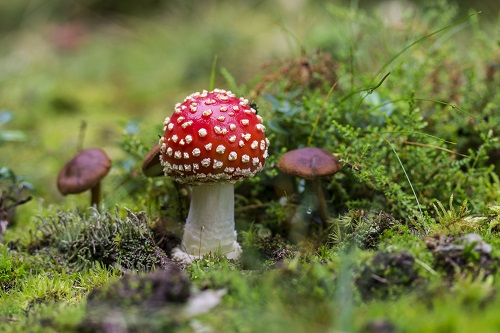
Autumn fruits poisoning in dogs
As summer draws to a close, the changing seasons bring a wide variety of autumn fruits to our gardens, parks, and countryside. While many people enjoy the colours and abundance of this time of year, it also presents potential hazards for our pets. Dogs in particular are naturally curious and often investigate or eat fallen fruits during walks or while roaming in the garden. Even seemingly harmless fruits can cause problems, and some species contain toxins that may lead to serious illness.
This article highlights the most common autumn fruits and seeds of concern, the risks they pose to animals, and how owners can reduce the likelihood of poisoning incidents.
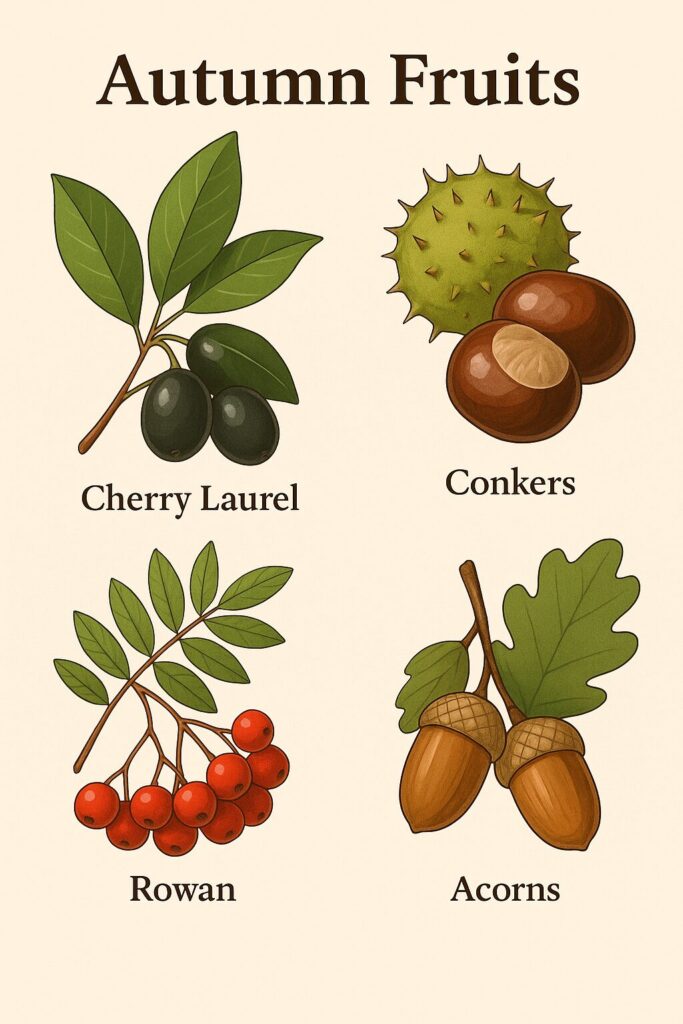
General Risks of Eating Fallen Fruit
Ingestion of any plant material may cause digestive upset in pets, particularly dogs. Common signs include drooling, vomiting, diarrhoea, and abdominal pain. Some fruits and seeds pose an additional risk of gastrointestinal obstruction. Hard, indigestible items such as acorns and conkers can lodge in the stomach or intestines, especially in smaller dogs. These obstructions may require surgical removal and can be life-threatening if not treated promptly.
Another general concern with fallen fruits is contamination. Once fruits lie on the ground, they are prone to mould growth and fermentation. Mouldy fruit may contain tremorgenic mycotoxins, which overstimulate the nervous system and can cause restlessness, panting, muscle tremors, and even seizures. Fermented fruit can produce ethanol (alcohol), which is toxic to animals and may lead to unsteadiness, lethargy, hypothermia, and in severe cases, coma. Interestingly, suspected cases of ethanol poisoning have also been reported in wild birds after feeding on fermented fruits.
Specific Autumn Fruits of Concern
1. Cherry Laurel (Prunus laurocerasus)
Cherry laurel is a common ornamental shrub found in gardens and hedgerows. Its glossy leaves and clusters of black berries can be attractive to animals. This plant contains cyanogenic glycosides—compounds that release cyanide when chewed or digested.
Ruminants (such as cattle, sheep, and goats) are particularly sensitive and can develop severe or fatal poisoning.
Dogs generally experience gastrointestinal upset rather than systemic toxicity, but the signs can still be quite pronounced, including vomiting, diarrhoea, and abdominal pain. In some cases, lethargy and weakness may also occur.

2. Conkers (Horse Chestnut, Aesculus hippocastanum)
Conkers are large, shiny seeds from horse chestnut trees and are a frequent source of curiosity for dogs. In addition to their large size (which increases the risk of obstruction), conkers contain aesculin, a toxin that can irritate the gastrointestinal tract. Clinical signs may include drooling, vomiting, diarrhoea, abdominal pain, and restlessness. Severe cases are uncommon but possible.
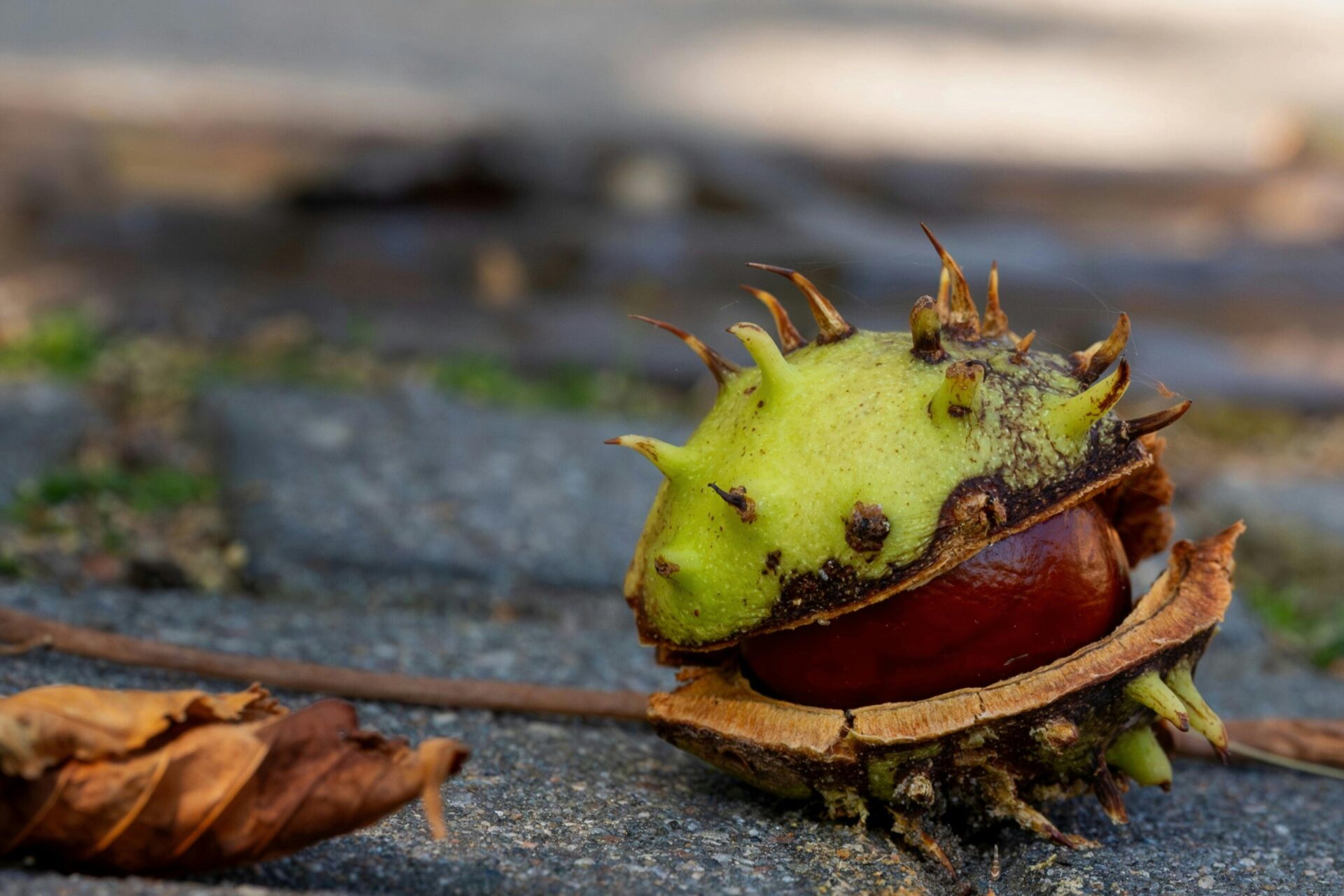
3. Acorns (Oak, Quercus species)
Acorns are another common autumn hazard. Like conkers, they pose both a physical risk of obstruction and a toxicological risk. Acorns contain tannins, which can cause gastrointestinal irritation leading to vomiting, diarrhoea, and abdominal discomfort. In ruminants, acorn poisoning can cause kidney and liver damage, but in dogs the effects are usually limited to digestive upset—though this can still be significant.
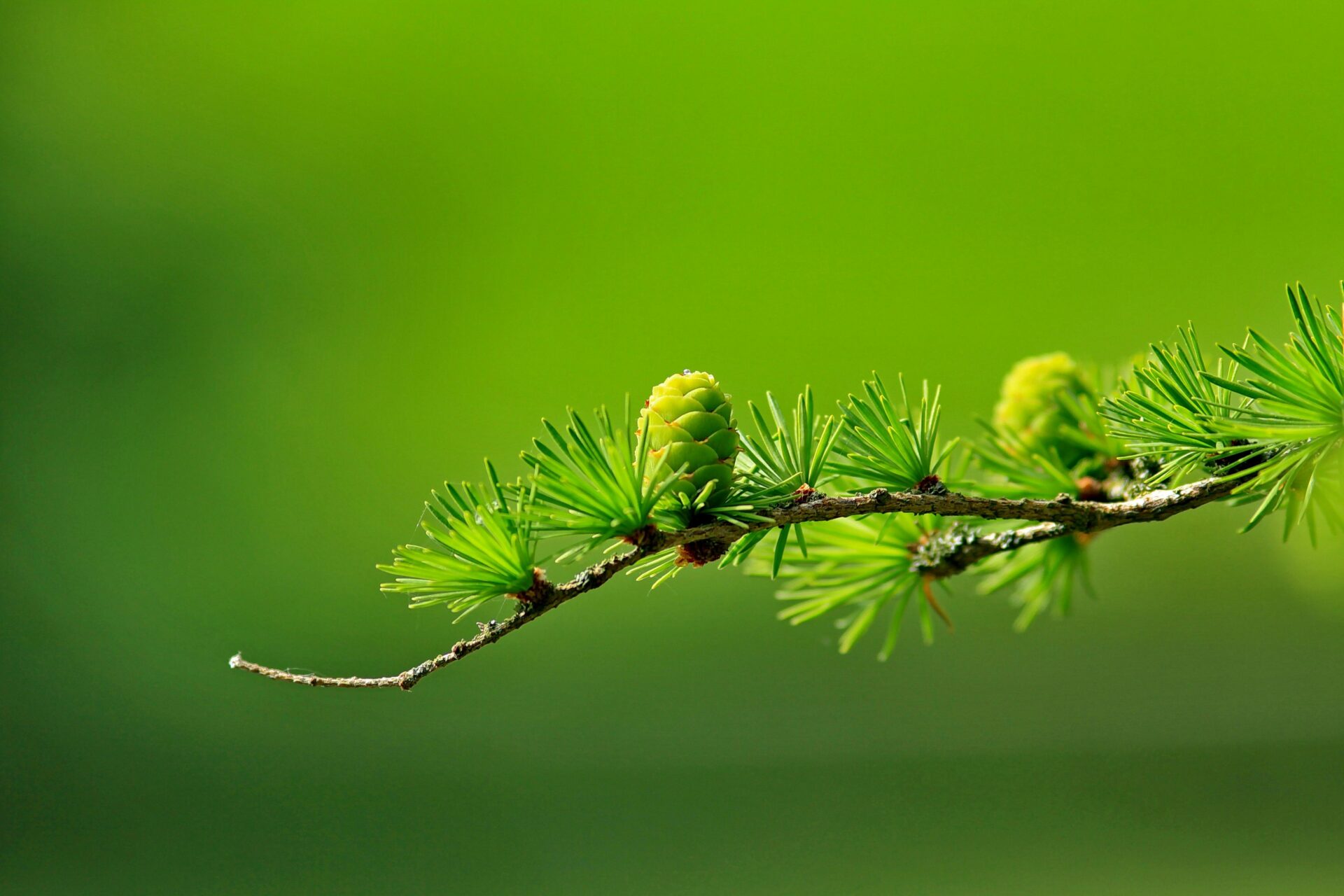
4. Rowan Berries (Sorbus aucuparia)
Rowan trees produce clusters of bright red berries in the autumn. These berries contain parasorbic acid, which can cause gastrointestinal irritation when ingested in large amounts. Fortunately, most dogs would need to consume a substantial quantity of berries to become unwell, and signs are usually limited to vomiting and diarrhoea.
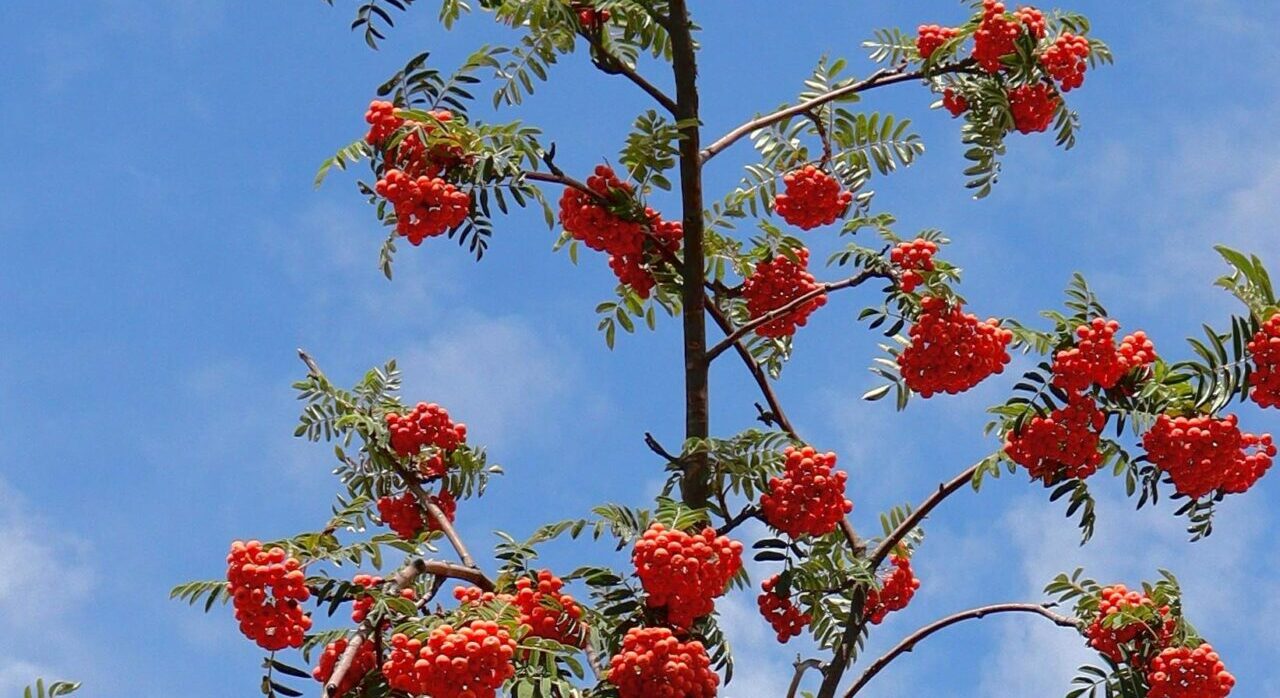
5. Apples and Other Windfall Fruits
Windfall apples, pears, and plums are often abundant in gardens and orchards. While small amounts of fresh fruit flesh are not usually harmful, ingestion of large quantities can lead to digestive upset. The stones and pips of some fruits (e.g., apple seeds, plum stones) contain cyanogenic glycosides, but the amounts are generally too small to cause toxicity unless consumed in large numbers.
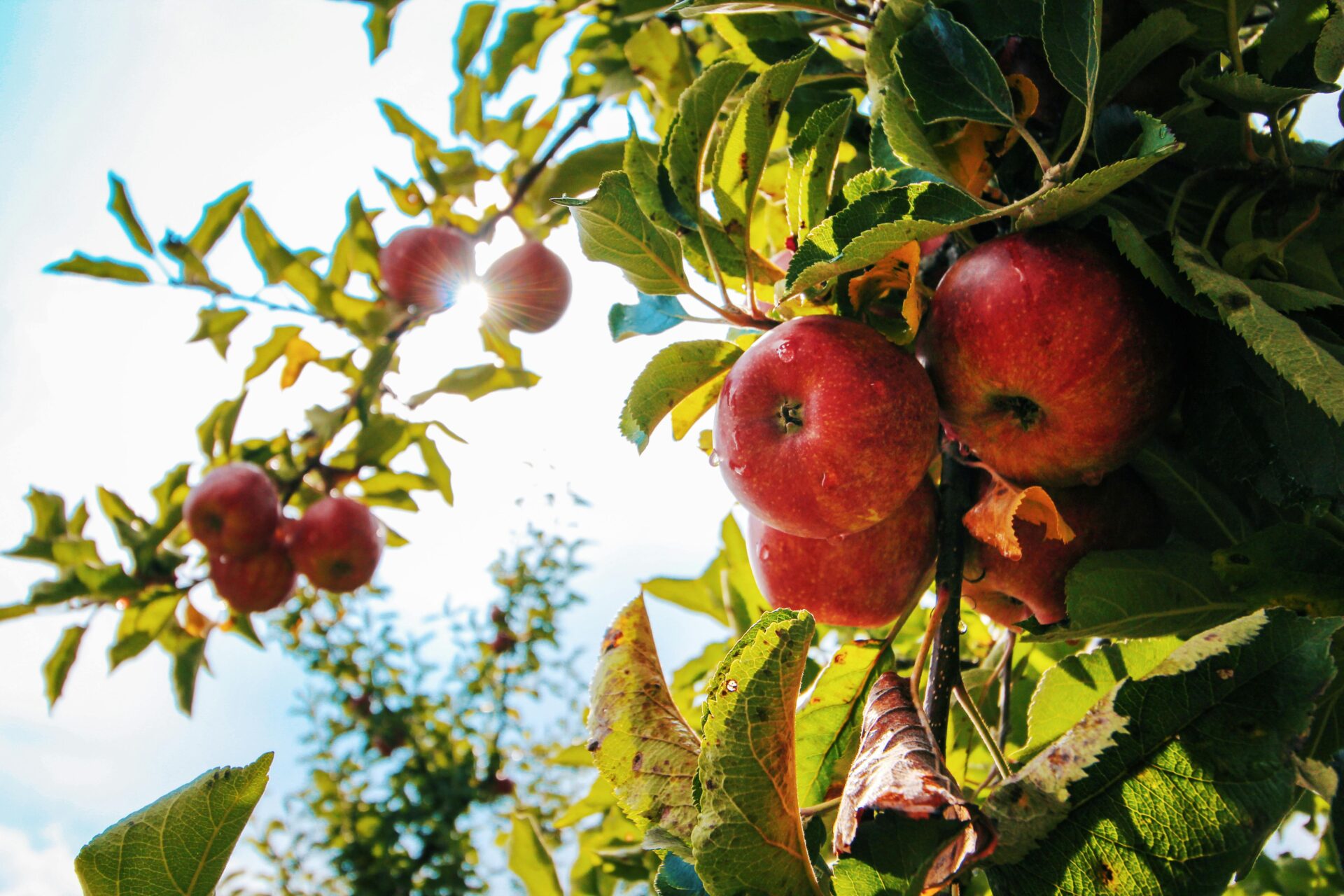
The greater concern is with fruit that has been left on the ground for some time. Mouldy fruit can produce tremorgenic mycotoxins, while fermenting fruit may contain ethanol, both of which can cause more serious illness.
Recognising Signs of Poisoning
Owners should be alert for the following clinical signs if they suspect their pet has eaten fallen fruit or seeds:
- Drooling and excessive salivation
- Vomiting and diarrhoea (sometimes severe or bloody)
- Loss of appetite and abdominal discomfort
- Lethargy or weakness
- Tremors, seizures, or collapse in severe cases
Signs may develop within hours of ingestion, and the severity depends on the type of fruit, the amount eaten, and the size of the animal.
What Owners Should Do
If a pet is suspected of eating any potentially toxic plant or fruit, owners should:
- Contact a veterinary professional promptly for advice, even if the pet is not yet showing signs.
- Avoid home remedies—do not attempt to make the animal vomit without veterinary guidance.
- Provide a sample of the fruit, plant, or seed (if possible) to aid identification.
Conclusion
Autumn brings beauty and abundance to the natural world, but it also carries hidden dangers for pets. Many fruits, seeds, and ornamental plants can cause illness, ranging from mild digestive upset to serious toxicity or obstruction. Dog owners in particular should remain vigilant on walks and in gardens, promptly clearing away fallen fruits where possible.
If there is ever any doubt, seeking veterinary advice early is the safest course of action. With awareness and quick response, most cases of autumn fruit ingestion can be managed successfully, helping pets stay safe and healthy throughout the season.
